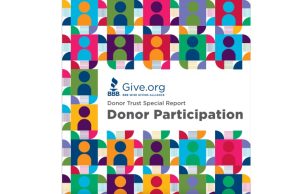Donor churn is improving but charities are still losing three more donors each year than new and returning donors are giving to organizations. Less than half of donors supported the same charity two years in a row, according to a new survey.
The 2015 Fundraising Effectiveness Project (FEP) Survey Report measures gains and losses in gift amounts and in the number of donors among participating charitable organizations. It was developed by the Association of Fundraising Professionals (AFP) and the Urban Institute, in conjunction with donor software providers.
Some 43 percent of donors in the FEP survey who gave to participating survey organizations in 2013 gave to those same groups last year. Average donor retention over the past nine years was 44 percent, with a high of 46 percent in 2005.
For every $100 a charity gained during the 2013-14 year, it lost $95 from lapsed donors and donors who reduced giving from the previous year, for a $5 gain. Nonprofits continued to lose slightly more donors than they recruited. For every 100 new and returning donors, 103 departed without a gift, for a net loss of three donors. Three of the past four years have seen charities lose more donors than they retained, a negative donor loss.
In 2007, the net giving level was +14, with charities losing $86 for every $100 gained, compared with +$5 last year. Donor levels were stronger before the Great Recession, with charities losing only 82 donors for every 100 gained, compared with the 103 lost last year.
The survey received data from more than 8,000 respondents covering year-to-year fundraising results for 2013-2014. Respondents raised more than $6.5 billion from about 6.74 million donors for an average total annual giving per respondent of more than $833,000 and average annual giving per donor of more than $1,150.
“This is not a new phenomenon,” AFP President and CEO Andrew Watt said in a press release announcing the survey results. “One of the realities the FEP makes clear is that donors do not simply choose a few charities to support and stick with them every year. Donors are remarkably inconsistent in their giving, whether it’s because they lost interest in a cause, were giving because a friend or family member asked them, or did not like how the charity was treating them. The charitable sector’s challenge is to figure out how to better inspire and retain donors from year to year,” he said.
“In some ways, nonprofits are in a new world when it comes to post-recession giving levels and behavior,” said Elizabeth Boris, founding director of the Center on Nonprofits and Philanthropy at the Urban Institute. “When the economy was strong, we worried less about retaining donors because new donors were easy to find. But it’s far less expensive to retain existing donors than it is to identify and find new donors. The search for new donors is a costly burden for many charities,” she said.
Charities that raised $500,000 or more each year experienced at 10 percent net gain in giving last year, compared with just 3 percent for those raising between $100,000 and $500,000, and a net loss of 8 percent for those raising less than $100,000.
Larger organizations find it easier to weather economic bad times and raised more funds than smaller ones, according to Wilson “Bill” Levis, FEP project manager and affiliated scholar with the Urban Institute’s Center on Nonprofits and Philanthropy. “While the difference was actually smaller in 2014 than it was in 2013, this is a trend that has continued for many years,” he said. “The importance of a fundraising staff and a well-known brand cannot be discounted. Smaller organizations can be successful but it is tougher.”
The full study is available at www.afpnet.org/FEP, under “Reports.”










